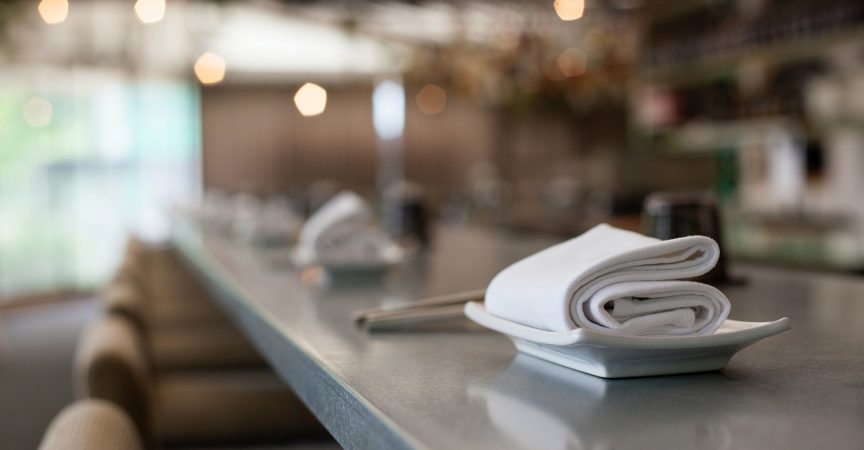Always Vote on the Complete Picture: The new face of fine dining in Canada
In the pre-COVID world, I used to ask my restaurant judges for Canada’s 100 Best to vote on restaurant quality based on four considerations: the quality of the cooking, wine list, décor and ambience. Always vote on the complete picture, I pleaded.
But that’s not the complete picture anymore; it’s not even a partial one. These one-time pillars of the restaurant quality equation have been temporarily shelved.
“Now hospitality is all about making people feel safe,” Massimo Piedimonte, the former chef at Montreal’s revered Le Mousso, who in April 2021 will be opening his first restaurant, Cabaret l’Enfer, on St-Denis Street.
When safety means waiters in visors or facemasks, Plexiglas dividers between widely spaced tables, roped off bar seating and rooms filled to what used to be half-capacity, ambience and décor cease to be major considerations. The abbreviated menus and wine lists on offer in these difficult times cannot be fairly assessed in comparison to what used to be, but rather against what’s on offer now—if anything at all—at the restaurant next door.
Nonetheless, today’s sadly diminished offer is enough to fill a few seats and—crucially—get the touchless pay pad pinging. I’ve tried to book patio tables at several Toronto restaurants these last few months at places from Terroni to Alobar Yorkville, only to find them full at my requested time. Even new places that were forced to open during the pandemic and earn what they could without the benefit of a pre-existing client base seem to be doing fairly well under the circumstances.
For example, take Pompette, a modern bistro that was poised to open on Toronto’s bustling College Street strip in springtime, well-equipped for the season with a great patio and an exceptional cocktail program. But instead, had to launch the business on the strength of takeout pâté en croûte and the like. Two months later—as Ontario’s Stage Two permitted it—they segued to patio service, and then as the province entered Stage Three on July 31st, added indoor dining, too. I dropped by on a chilly weeknight early in September to find a dozen tables had settled in before me; the patio was all but full, with two more groups indoors.
“There were a few positives to opening during COVID,” conceded Pompette manager Jonathan Bauer-Monneret, a former wine director at Daniel Rose’s wonderful (but since shuttered) Paris restaurant, Spring, who in 2014 was voted Meilleur Sommelier de France. “I mean, from the point of view of getting suppliers, it’s been very good. There’s easier access to great products because so many restaurants are closed. And then, people haven’t been out for dinner in six months. To be able to offer them something new is a great [starting] point.”
But then there are all the negatives. Chief among them, obviously, is the problematic math of socially distant seating. Pompette can currently seat 45 outside. In the original, pre-COVID business plan that would have been 60-65. Inside they have 20 seats when they had planned 45. And where many restaurants are hoping to at least have a go at continuing their takeout programs to help mend that gap, Pompette abandoned theirs—at least temporarily—with a view to focussing on getting their opening right.
And here is where things get particularly interesting. Takeout being where they started, it is also the part of the business that generated their first regulars—customers that popped in at least once a week for a meal to go. Those good customers did not translate into dine-in regulars; most proved “just not ready to eat at the restaurant.” Not even on the patio. And so they haven’t been seen since.
According to national Angus Reid polling conducted in late August, only 27% of Canadians were completely comfortable with the idea of dining out. 37% would do so with manageable misgivings. And 34% were firmly opposed.
And that was when new COVID-19 infection rates were at their lowest. Since then the incidence of new infections rates has been spiralling upwards. And the worsening weather is quickly eliminating patios from the category of desirable destinations, so that dine-in will soon be the only option. All that will swell the ranks of those opposed to dining out, and thin the numbers of those happy to do so.
Except for the intangibles. Most people are sociable by nature, inadequate cooks and sick to death of eating at home and doing dishes. While the anecdotal evidence show that Canadians are diligent mask wearers and hand-washers, they are also far less frightened of COVID than they were at its outset. A fulfilling life can accommodate a little risk. I don’t any longer know anyone who puts on rubber gloves to collect the morning post from their mailbox. But I do know many who have tentatively taken up flying again, when the seat-sale is right. And they’d mostly take a chance on a restaurant given the same sort of nudge.
Take for example the UK’s “eat out to help out” program. This August-long initiative provided a 50% discount on all meals consumed in restaurants, pubs or cafés up to £10 per person on the previously slow days of Monday, Tuesday and Wednesday. On Monday, August 3rd, the first day of its implementation, restaurant sales rose 100% compared to the previous Monday. The first three days saw 10 million meals and cost the government £105 million.
As long as our health departments deem it safe for our restaurants to be open, I would prefer we followed that lead and incentivized customers to visit them and spur the economy, than pay people to stay home, as we did. Likely we’ll need both to help ensure that there are still a few good restaurants around when we get back to eating out with carefree impunity, and taking stock of food and ambience instead visors and dividers. That day can’t come soon enough.









